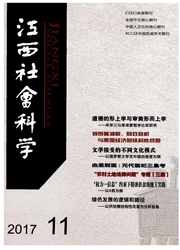

 中文摘要:
中文摘要:
应用能值理论和方法,以江西银河杜仲规模绿色生猪养殖基地为例,对规模养殖废弃物生物质综合利用工程的环境承载力及可持续能力进行分析评价.研究结果表明:综合利用工程通过沼气工程将规模养殖废弃物转化为沼气、沼液、沼渣等高效生物能,而这些生物能又通过“三沼”利用工程反馈回系统.大量废弃物再生能值的反馈投入不仅减少了系统对不可再生辅助能投入的需求,且减少了系统污染物的负产出,从而综合利用工程系统在资源系统的可更新率、能值产出率和环境承载率等方面都有明显的优势.同时,工程通过能量在养殖业和种植业间循环流动,实现绿色养殖和种植,为市场提供了绿色生猪及绿色蔬菜的同时也为企业带来可观的溢价收入.
 英文摘要:
英文摘要:
In the case of Jiangxi Yinhe Scale Eucommia Pig Breeding Base,the environmental load and local sustainability of the scale breeding waste biomass integrated utilization project was evaluated by using the emergy theory and method.The results indicated that the integrated project transfered the breeding waste into the efficient bio-energy embedded in biogas,biogas slurry and biogas residue through the process of anaerobic digestion,which in turns feedbacked into the system through the bio-energy utilization engineering.In Yinhe scale pig breeding waste biomass integrated utilization project,more reliance on the local recycling renewable resource input reduced the systematical demand for the non-renewable emergy purchased.The recycling utilization of the breeding waste,such as pig manure,urine,etc.,decreased the negative output of the system contaminants.All these make the breeding waste integrated project system illustrated an obvious advantage in the value of indices of R%,EYR,and ELR.In addition,the project realized both the green pig breeding and the organic planting via the circulating energy between the breeding and planting.The output of Eucommia pig and green vegetables would bring a considerable premium income for the enterprises.
 同期刊论文项目
同期刊论文项目
 同项目期刊论文
同项目期刊论文
 期刊信息
期刊信息
